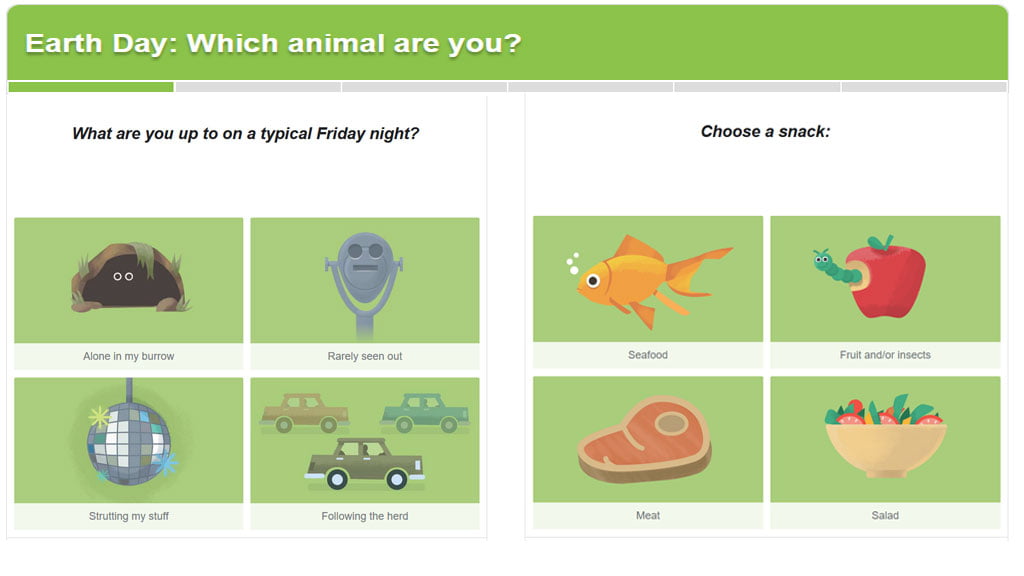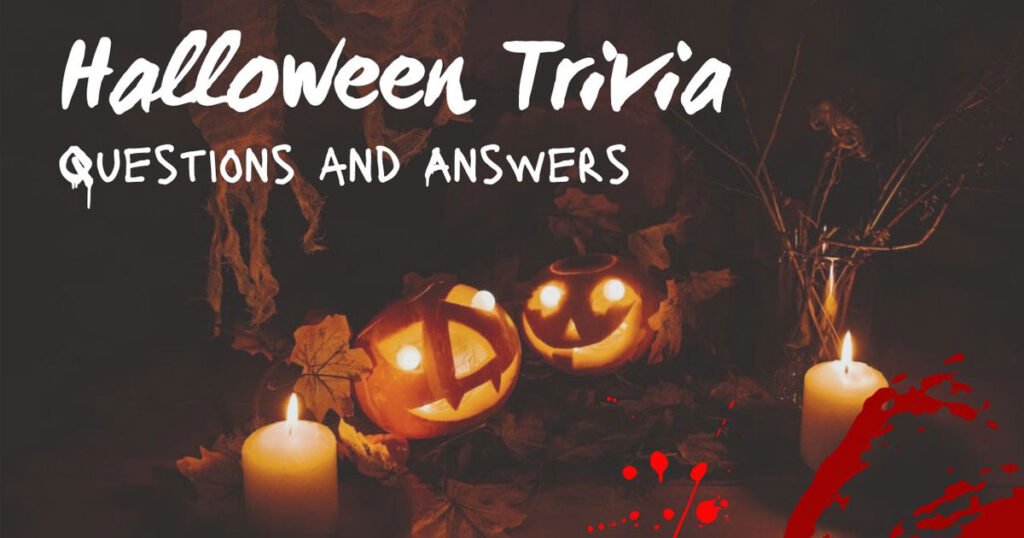High school trivia is a fun and engaging way to test knowledge across core subjects like history, science, literature, and math, often used in classrooms and game nights to make learning interactive and competitive.
Remember the buzz of anticipation in a quiet classroom, the division into teams, and the fierce yet friendly competition to be crowned the trivia champions? High school trivia is far more than just a game; it’s a dynamic educational tool, a social catalyst, and a fantastic way to revisit the wide-ranging knowledge we absorbed during our formative years. Whether you’re a teacher looking to create an engaging review session, a student preparing for a quiz bowl, or an adult feeling nostalgic for the days of textbook learning, crafting the perfect set of high school trivia questions and answers is an art form. This comprehensive guide will walk you through the importance of trivia, the key subjects to cover, how to structure questions for maximum impact, and even provide a hefty sample to get you started.
The Educational Power of Play: Why Trivia Belongs in High School
Let’s be honest, the word “trivia” can sometimes imply something unimportant. However, in an educational context, nothing could be further from the truth. The value of incorporating trivia into a high school setting, whether formally in the classroom or informally in a club, is immense. Well-constructed trivia does more than just recall facts; it reinforces learning, builds confidence, and promotes healthy social interaction.
When students engage in trivia, they are actively retrieving information from their memory. This process of active recall is proven to strengthen neural pathways, making that knowledge more durable and easier to access in the future, say, during a final exam. Furthermore, trivia often presents information in a new context.
A student might have memorized a historical date for a test, but being asked “In what year did the Titanic sink?” during a history round connects that fact to a pop-culture touchstone, deepening the association. The competitive, game-based nature of trivia also increases dopamine production, which enhances memory and motivation. Learning becomes associated with fun and reward, rather than just pressure and assessment.
High School Trivia Questions And Answers
High School Trivia Questions and Answers are engaging challenges designed to test knowledge across a wide range of core academic subjects and popular culture. Covering everything from literature, history, and science to math, geography, and the arts, they serve as a fun and interactive tool for both learning and review.
These trivia sets are perfect for stimulating classroom competition, preparing for exams, club activities, or simply exercising the brain. They encourage critical thinking, recall of key facts, and collaborative learning, making them a valuable and entertaining resource for students and teachers alike.
Literature & English
Q: Who wrote the play “Romeo and Juliet”?
A: William Shakespeare
Q: What is the name of the fictional, ring-creating land in J.R.R. Tolkien’s legendarium?
A: Mordor
Q: In George Orwell’s “Animal Farm,” what type of animal is the leader, Napoleon?
A: A pig
Q: What literary device is used in the phrase “The wind whispered through the trees”?
A: Personification
Q: Who is the author of the dystopian novel “1984”?
A: George Orwell
Q: What is the main setting of Harper Lee’s “To Kill a Mockingbird”?
A: Maycomb, Alabama
Q: In poetry, what is a 14-line poem with a specific rhyme scheme called?
A: A sonnet
Q: Which Shakespearean tragedy features the character Iago?
A: Othello
Q: What is the name of the protagonist in “The Catcher in the Rye”?
A: Holden Caulfield
Q: What novel begins with the line, “It was the best of times, it was the worst of times”?
A: A Tale of Two Cities by Charles Dickens
History & Social Studies
Q: In what year did the United States declare its independence from Great Britain?
A: 1776
Q: Who was the primary author of the Declaration of Independence?
A: Thomas Jefferson
Q: The ancient civilization of Mesopotamia was located between which two rivers?
A: The Tigris and Euphrates Rivers
Q: What was the name of the series of programs and reforms enacted by President Franklin D. Roosevelt to combat the Great Depression?
A: The New Deal
Q: Which war was fought in the United States from 1861 to 1865?
A: The American Civil War
Q: Who was the first female Prime Minister of the United Kingdom?
A: Margaret Thatcher
Q: The ancient trade routes that connected the East and West were collectively known as what?
A: The Silk Road
Q: During which conflict was the atomic bomb dropped on Hiroshima and Nagasaki?
A: World War II
Q: What was the name of the ship that brought the Pilgrims to America in 1620?
A: The Mayflower
Q: Who was the leader of the Soviet Union during the Cuban Missile Crisis?
A: Nikita Khrushchev
Science
Q: What is the smallest unit of life?
A: The cell
Q: What is the chemical symbol for gold?
A: Au
Q: What is the name of the process plants use to convert sunlight into energy?
A: Photosynthesis
Q: What is the hardest natural substance on Earth?
A: Diamond
Q: How many planets are in our solar system?
A: Eight
Q: What is the name of the force that pulls objects toward the center of the Earth?
A: Gravity
Q: What is H₂O more commonly known as?
A: Water
Q: What is the closest star to Earth?
A: The Sun
Q: What are the three states of matter?
A: Solid, liquid, and gas
Q: Which subatomic particle has a negative charge?
A: Electron
Mathematics
Q: What is the value of Pi rounded to two decimal places?
A: 3.14
Q: In a right triangle, what is the name of the longest side?
A: The hypotenuse
Q: What is the term for a polygon with five sides?
A: Pentagon
Q: What does the acronym PEMDAS stand for, representing the order of operations?
A: Parentheses, Exponents, Multiplication and Division (left to right), Addition and Subtraction (left to right)
Q: If a triangle has all sides of different lengths, what is it called?
A: Scalene triangle
Q: What is the square root of 144?
A: 12
Q: In the equation y = mx + b, what does the ‘m’ represent?
A: The slope
Q: What is the area of a rectangle with a length of 10 and a width of 4?
A: 40 (square units)
Q: What is the sum of the angles in a triangle?
A: 180 degrees
Q: What is the next number in the sequence: 1, 1, 2, 3, 5, 8, 13, __?
A: 21 (Fibonacci sequence)
Geography
Q: What is the longest river in the world?
A: The Nile River
Q: Which continent is the largest by land area?
A: Asia
Q: What is the capital of Australia?
A: Canberra
Q: The Amazon Rainforest is primarily located in which South American country?
A: Brazil
Q: What are the names of the five Great Lakes?
A: Huron, Ontario, Michigan, Erie, Superior (HOMES)
Q: Which mountain range separates Europe from Asia?
A: The Ural Mountains
Q: What is the smallest country in the world by land area?
A: Vatican City
Q: Which desert is the largest in the world?
A: The Antarctic Desert (or the Sahara if considering hot deserts)
Q: What is the capital of Japan?
A: Tokyo
Q: Which ocean is the largest?
A: The Pacific Ocean
Arts & Music
Q: Who painted the Mona Lisa?
A: Leonardo da Vinci
Q: What is the name of the famous theater in London where many of Shakespeare’s plays were performed?
A: The Globe Theatre
Q: How many symphonies did Ludwig van Beethoven compose?
A: Nine
Q: What art movement is Pablo Picasso most associated with?
A: Cubism
Q: What family of instruments does the violin belong to?
A: String instruments
Q: Who is the artist known for his Campbell’s Soup Can paintings?
A: Andy Warhol
Q: In music, what term means the speed of a piece?
A: Tempo
Q: What is the name of the famous ballet by Tchaikovsky featuring a sleeping princess?
A: The Sleeping Beauty
Q: Which composer wrote “The Four Seasons”?
A: Antonio Vivaldi
Q: What is the primary language of the opera?
A: Italian
Biology
Q: What is the powerhouse of the cell?
A: The mitochondrion
Q: How many chromosomes do humans have?
A: 46
Q: What is the process of cell division called?
A: Mitosis
Q: What is the largest organ in the human body?
A: The skin
Q: What type of animal is a frog during its larval stage?
A: A tadpole
Q: What is the study of heredity and variation in organisms called?
A: Genetics
Q: Which part of the plant is responsible for photosynthesis?
A: The leaf
Q: What is the name of the substance that carries genetic information in living organisms?
A: DNA (Deoxyribonucleic Acid)
Q: Which system in the human body is responsible for pumping blood?
A: The circulatory system
Q: What are animals without a backbone called?
A: Invertebrates
Pop Culture & Media
Q: What 1997 film became the highest-grossing film of all time until Avatar (2009), featuring a famous sinking ship?
A: Titanic
Q: What is the name of the fictional town in the Netflix series “Stranger Things“?
A: Hawkins
Q: Which singer is known as the “Queen of Pop”?
A: Madonna
Q: What social media platform is known for short-form video content and has a logo of a musical note?
A: TikTok
Q: Who directed the superhero film “The Dark Knight”?
A: Christopher Nolan
Q: What was the first name of the character played by Johnny Depp in the “Pirates of the Caribbean” series?
A: Jack (Captain Jack Sparrow)
Q: Which boy band had members named Kevin, Howie, Brian, AJ, and Nick?
A: The Backstreet Boys
Q: In the Harry Potter series, what is the name of Ron Weasley’s pet rat?
A: Scabbers
Q: What is the best-selling music album of all time?
A: Michael Jackson’s “Thriller”
Q: Which actor played Iron Man in the Marvel Cinematic Universe?
A: Robert Downey Jr.
Government & Civics
Q: How many amendments are in the U.S. Bill of Rights?
A: Ten
Q: How many U.S. Senators are there?
A: 100
Q: What are the first ten amendments to the U.S. Constitution called?
A: The Bill of Rights
Q: Who is the current Chief Justice of the United States Supreme Court? (As of 2023)
A: John G. Roberts Jr.
Q: What are the two major political parties in the United States?
A: Democratic and Republican
Q: How many justices serve on the U.S. Supreme Court?
A: Nine
Q: Who is the leader of the executive branch of the U.S. government?
A: The President
Q: What is the supreme law of the land in the United States?
A: The Constitution
Q: What is the name of the president’s official residence and office?
A: The White House
Q: What are the three branches of the U.S. government?
A: Executive, Legislative, and Judicial
World Languages & Grammar
Q: From which language do we get the words “cliché,” “genre,” and “façade”?
A: French
Q: What is the most spoken language in the world by number of native speakers?
A: Mandarin Chinese
Q: In English, what is the term for a word that is similar in meaning to another word?
A: Synonym
Q: What is the official language of Brazil?
A: Portuguese
Q: In the sentence “She ran quickly,” what part of speech is “quickly”?
A: An adverb
Q: What is the name of the punctuation mark used to indicate possession or a contraction?
A: Apostrophe
Q: How many letters are in the Spanish alphabet?
A: 27
Q: What is the term for a word that sounds like what it represents (e.g., buzz, pop, bang)?
A: Onomatopoeia
Q: In German, what do the words “der,” “die,” and “das” mean?
A: “The” (they are grammatical gender articles)
Q: What is the past tense of the irregular verb “to bring”?
A: Brought
Q: In Greek mythology, who is the king of the gods?
A: Zeus
Crafting the Perfect Question: Difficulty and Subject Balance
Creating a great trivia session isn’t about just reading random facts from the internet. The most engaging games are carefully curated to ensure a smooth flow and an appropriate challenge level. The key is balance. You want a mix of easy, medium, and difficult questions to keep all participants engaged. If every question is impossibly hard, players become discouraged. If every question is too easy, the game loses its competitive edge.
A good rule of thumb is the 50/30/20 rule: roughly 50% of questions should be of medium difficulty, answerable by most students who paid attention in class. About 30% should be easier, designed to build momentum and confidence. The final 20% can be the real stumpers—the questions that separate the top teams and often involve more nuanced thinking or obscure details. This structure ensures that everyone stays involved while still providing a challenge.
Subject balance is equally crucial. A well-rounded trivia game mirrors a well-rounded education. Focusing too heavily on one area, like science, will alienate students whose strengths lie in the humanities, and vice versa. Covering a broad range of topics ensures that every participant has a moment to shine and demonstrates the value of diverse knowledge.
The Core Four: Essential Subjects for Any High School Trivia Game
While trivia can encompass endless topics, most high school-level trivia is built on the foundation of four core academic subjects: History, Science, Literature, and Mathematics. Let’s break down what to expect from each category.
History: Unraveling the Past
History questions form the backbone of most trivia sets. They explore pivotal events, influential figures, and important dates that shaped the world. Questions can range from ancient civilizations to modern geopolitics, though U.S. and World History from the Renaissance forward are most common in American high schools.
Table: Sample History Trivia Topics
| Era/Topic | Example Easy Question | Example Hard Question |
|---|---|---|
| American Revolution | Who was the primary author of the Declaration of Independence? (Thomas Jefferson) | The “shot heard ’round the world” refers to the first shots fired at which two battles? (Lexington and Concord) |
| World War II | On which day did the attack on Pearl Harbor occur? (December 7, 1941) | What was the code name for the Allied invasion of Normandy? (Operation Overlord) |
| Ancient Civilizations | Which ancient civilization built the pyramids at Giza? (Ancient Egyptians) | The Code of Hammurabi was a set of laws from which ancient Mesopotamian empire? (Babylonian) |
Science: Understanding the Natural World
Science trivia tests knowledge of biology, chemistry, physics, and earth science. These questions often focus on fundamental principles, famous scientists, and the periodic table. They require not just memorization, but an understanding of how the world works.
Literature: Exploring the Written Word
This category delves into novels, poetry, short stories, and authors typically covered in the high school canon. Questions might ask about plot points, characters, authors, or famous quotations. From Shakespeare to S.E. Hinton, this category is a favorite for book lovers.
Mathematics: The Language of Numbers
Don’t worry, math trivia doesn’t usually require complex calculus on the spot. Instead, it focuses on fundamental concepts, famous theorems, basic arithmetic, and mathematical puzzles. It’s more about quick thinking and numerical fluency than solving equations.
Beyond the Basics: Expanding Your Trivia Horizons
While the core four are essential, the most memorable trivia games include rounds that tap into different kinds of intelligence and pop culture knowledge. These categories level the playing field and add an element of surprise.
Geography: Mapping the World
Geography questions test knowledge of countries, capitals, major landforms, and flags. In our increasingly global society, this knowledge is more important than ever. A question might ask for the longest river in the world (The Nile) or the capital of Australia (Canberra).
Fine Arts: A Brush with Culture
This encompasses visual art (painting, sculpture), music (classical and modern), and theatre. Questions could identify a famous painting from a description (Starry Night by Van Gogh) or ask about the composer of The Four Seasons (Vivaldi).
Pop Culture & Current Events: The Here and Now
Including a round on pop culture—movies, music, sports, and recent news—keeps the game feeling fresh and relevant. It acknowledges that valuable knowledge exists outside of textbooks and ensures that not every question feels like a test.
How to Structure Your Trivia Night for Maximum Engagement
The format of your trivia event can make or break its success. A simple “read a question, get an answer” format can work, but adding structure creates more excitement. A common and effective format is the multi-round game.
Consider dividing your game into five or six rounds, each with a distinct theme. For example, Round 1: History Mixer; Round 2: Scientific Method; Round 3: Literary Lines; Round 4: World Geography; Round 5: Pop Culture Potpourri. You can even include a special “audio round” where you play snippets of songs for teams to identify or a “picture round” with handouts featuring flags, famous paintings, or chemical structures.
Using a platform like Kahoot! or Quizlet Live can digitize the experience, providing instant feedback and lively scoreboards. For a more traditional approach, a simple PowerPoint presentation with questions displayed one by one works perfectly. The most important thing is to have a clear, confident quizmaster to read the questions and a robust scoring system to avoid disputes.
Frequently Asked Questions
What makes a question “good” for high school trivia?
A good high school trivia question should be challenging but not impossible, and it should relate to subjects typically taught in high school or pop culture that resonates with the age group. It should require some thought but not be so obscure that no one knows the answer.
How can I make a trivia night more engaging?
You can make a trivia night more engaging by incorporating varied round formats, such as a “lightning round,” a “picture round,” or a “music round.” Providing a lively and enthusiastic host also makes a huge difference.
What are some of the best categories for high school trivia?
The best categories are a mix of academic subjects and fun topics. Excellent choices include History, Science, Literature, Geography, Sports, and Pop Culture (Movies, TV, Music).
Should I use a buzzer system for a trivia game?
A buzzer system is an excellent way to add excitement and a competitive edge, especially for a lightning round. It encourages quick thinking and can be a lot of fun.
How do you handle disputes over answers?
It’s always a good idea to have a designated “answer arbiter” or to agree as a group that the host’s answer is final. For contentious questions, the host can also provide a bit more context or an explanation.
Conclusion
High school trivia is so much more than a simple diversion. It is a vibrant celebration of knowledge, a powerful teaching tool, and a timeless social activity that brings people together through friendly competition. The process of crafting questions—balancing difficulty, mixing subjects, and injecting creative themes—is itself an exercise in appreciating the vast landscape of human learning. Whether you use the sample questions provided here or embark on creating your own, remember that the ultimate goal is to challenge the mind, spark curiosity, and, most importantly, have a tremendous amount of fun. So grab a whiteboard, gather your friends or students, and let the quest for trivia supremacy begin



